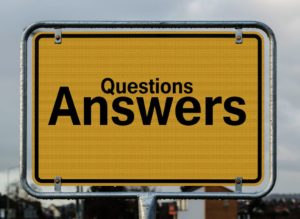Questioning Techniques for Teachers That Work
Today class, we’re exploring Questioning Techniques for Teachers. Specifically, which methods of questioning work, and which leave students struggling to stay awake or staring out the window looking for cloud animals. Questioning is one of the best tools you have when you are teaching a class. Great questions move things forward, lead to insightful answers, and get students thinking on a whole new level. Most teachers put a lot of thought into the questions they ask during a lesson. Sometimes however, those same teachers are content to hand out a quiz that requires little more than basic memorization of facts. Because of this, I thought I’d share this helpful little infographic about asking the right questions on quizzes.
What Do Your Quizzes Look Like?

Find more education infographics on e-Learning Infographics
Asking the Wrong Questions
We all know that questioning is a vital part of the teaching process. Without it, the classroom can become a very boring place. Did you ever have a teacher or professor who started talking at the beginning of class and didn’t stop until it was time to leave? Most of us have probably had that experience, and I think that most of us probably didn’t enjoy it. So, we know that questions are important, but how can we use them to move the educational process forward?
Here is an example of very poor use of questioning. It’s funny, but it also might look familiar to some of us. Let’s hope that you are not using this method…
Questions are supposed to serve a purpose. They should not only get the students sharing what they know, they should also gently nudge students into coming up with even better (and deeper) questions of their own. The thing is, there is more than one type of question AND there is more than one way to use questioning in the classroom. I’ve been asking myself some questions about questioning lately, and here’s what I’ve come up with so far. As always, PLEASE leave your comments about questions below (in the comments section).
Thinking About Questions
Some of this is certainly review for anyone who has ever made it through a Teaching 101 type of course, but hey, we can all use a reminder from time to time. So, why do we use questions class?
- They can be a great way to spark interest in the subject we are about to learn about.
- They help to develop critical thinking skills.
- To explore new insights.
- To summarize and/or review for an upcoming exam.
- To find out if an assigned reading or in class discussion/activity was fully understood.
- There are more reasons, but this isn’t meant to be an exhaustive list of reasons, just an example.
We know that there are also different levels of questioning that can serve a variety of purposes. Rote memorization recall questions have their place (remembering a poem or maybe multiplication tables), but in general, questions are much more powerful when they encourage students to take their thinking to a higher level. If you’d like to explore the proper percentages of question types to use, you might want to peruse this study.
I can sometimes come across as a bit cynical on this blog about the presentation methods used during in-service time, but I do glean some good stuff from them at times. Looking back through some notes I took a few years back (lots of doodles along the edges) I found some ideas about how to question students during class. I actually looked these up on purpose because I’ve used this method quite a bit since hearing about it. As you are discussing a given subject, let’s say an elementary reading story, you ask the students what they think and you go on from there. Here’s a very simplified example:
Teacher: What do you think about the character Charlotte in Charlotte’s Web?
Student: She’s very nice and she loves others.
Teacher: Why do you think that?
Student: Well, she really cares about Wilbur.
Teacher: How do you know that she cares about Wilbur?
Student: She makes webs that tell the people about him. That helps him to get famous, and that helps him to stay alive instead of getting eaten by people.
Teacher: That’s a great example. Can you tell me more about Charlotte’s character in the story?
Student: She also is nice to pretty much everyone else in the story and at the end, you can tell that she loves her baby spiders too.
This is a very simplified example, but you could follow this line of questioning to the point of asking the student what else they might want to know about a character or some other part of the story. Maybe a question about what happens to the baby spiders could lead to a student assignment to write a short sequel paragraph or even a science lesson that explores the life of spiders. The point is, you can use well placed questions to dig into almost any topic.
Some more things I think about questioning in the classroom…
- Some of my favorite activities involve sticky notes. I’ve taken to stocking up on them at the beginning of the year and picking them up any time I find them on sale. I like to use them in a couple of ways that are related to questioning. The first thing I like to do is to have small groups or pairs move from station to station and read a short article of about 3-4 paragraphs. Each article has a couple of questions underneath of it. Students write their answers on sticky notes and then place them on the wall. Another use I have for sticky notes is using them as exit tickets. Students have to leave a question about the topic of the day as they head out the door. These serve as a starting point for discussion at the beginning of the next class. There are other ways to use sticky notes (and you don’t really need them at all, really). The point is, there is no reason to make yourself the only person who can come up with questions. A lot of times, student questions lead to the most insightful discussions.
- This leads to my next point about digging into a topic using questions. Sometimes, you, as a teacher, need to just zip your lip. We’ve become accustomed to talking endlessly during class. We know about wait time after a question, but sometimes your better off just asking for questions and then staying silent. It may even reach a point of being a little bit uncomfortable, but someone will usually come forward with questions that you can work with before very long. Don’t get me wrong, you can still get the ball rolling, just don’t take the whole process of inquiry over because you are impatient. In the example above, you might ask something like, “What else might Charlotte have written in her web? How could that have changed the story?” Also, kids are pretty good at running with “what if” questions. Give it a try.
Of course there are tons of ways to use questions as a digging tool with your students. I hope that these ideas have helped you to get your creative juices flowing. PLEASE leave comments about ways that you’ve made use of questioning in your classroom. You never know what might help someone else to reach a student in their classroom!











Thanks for this. There are times when I get lazy about my questioning techniques and don’t dig as much as I probably could. These ideas will be helpful for me on those days.